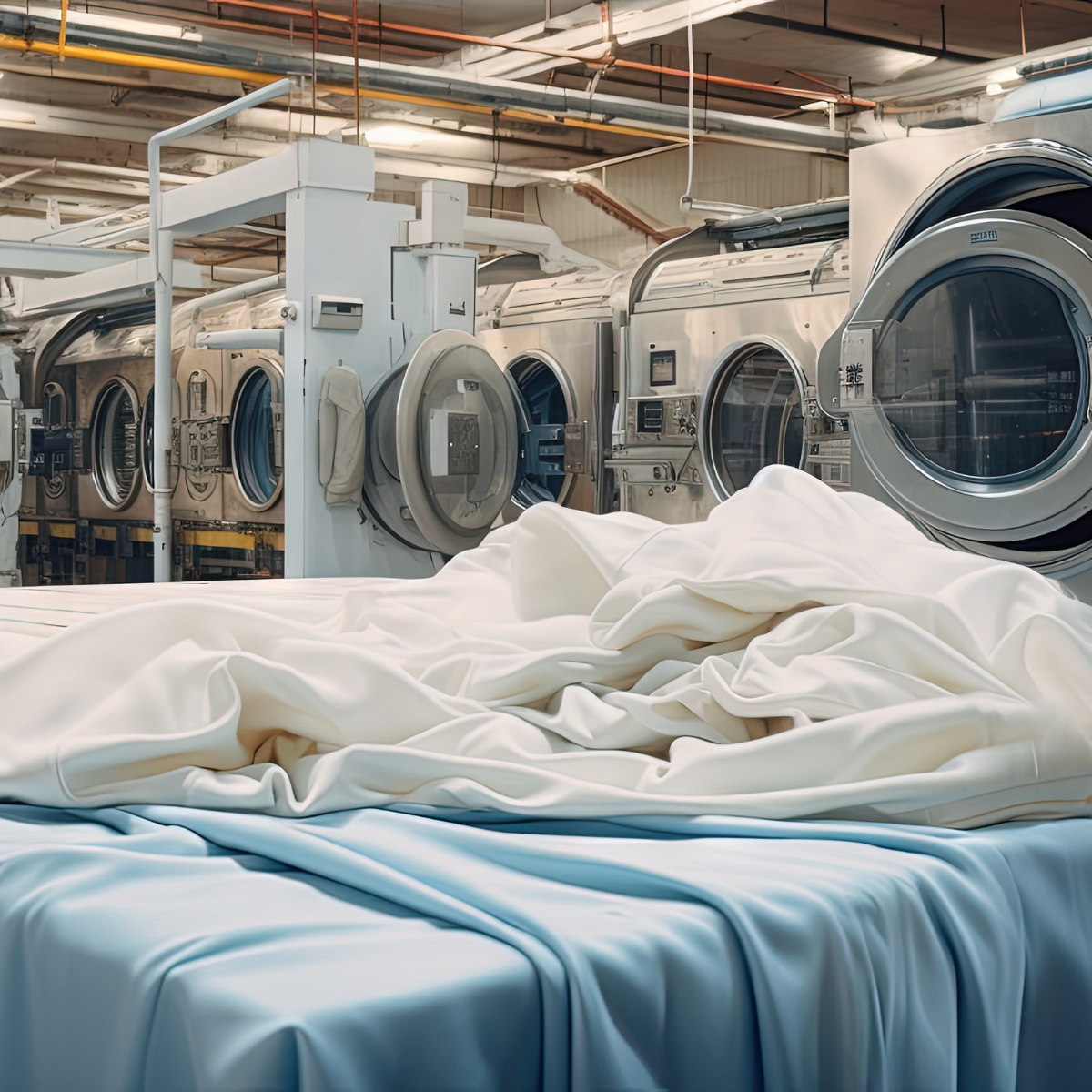Industrial laundries utilize a variety of chemicals to ensure efficient cleaning processes and achieve high-quality results.
These chemicals serve various purposes, including cleaning, disinfection, brightening, softening, and more.
The main chemical products used in industrial laundries, with their functions and applications, are presented below.
- DETERGENTS: Detergents form the basis for every cleaning process in an industrial laundry. They consist of a mixture of surfactants, enzymes, builders, and other additives. Surfactants help to loosen dirt and stains from textiles, while enzymes break down organic contaminants. Builders support the cleaning effect by reducing water hardness and binding heavy metals. Degreasing: Among others, sodium hydroxide is used to remove grease and oil residues from textiles. In industrial laundries, especially in areas like gastronomy or food processing, textiles can be heavily contaminated with grease and oil. Sodium hydroxide helps to dissolve and remove these residues. Hydrogen peroxide can be used for targeted stain removal, especially for organic stains like blood, sweat, or food.
- BLEACHES: Bleaches are used to whiten white textiles and remove stains. Common bleaches include chlorine (sodium hypochlorite) and oxygen bleach (sodium perborate or sodium percarbonate). Chlorine bleach is highly disinfectant and effective against stubborn stains, while oxygen bleach is gentler on textiles and operates at lower temperatures. Hydrogen peroxide is also used as a bleach, especially for delicate textiles that cannot tolerate chlorine bleach. It is less aggressive and therefore better suited for sensitive materials.
- DISINFECTANTS: In laundries processing textiles from hospitals, nursing homes, or other facilities with high hygiene requirements, disinfectants are used. Among others, hydrogen peroxide has disinfecting properties and can be used to kill pathogens such as bacteria, viruses, and fungi. In laundries handling textiles from hospitals, nursing homes, or other sensitive environments, hydrogen peroxide is often used as a disinfectant.
- FABRIC SOFTENERS: Fabric softeners are used to make textiles softer after the washing process and reduce static electricity. They contain cationic surfactants that bind to the fibers and give them a smooth surface.
- PH REGULATORS: pH regulators are used to stabilize the pH of the wash water and ensure that the cleaning chemicals can work effectively. They also help protect textiles from damage caused by a too-acidic or too-alkaline pH level. Examples include sodium carbonate (soda), citric acid, or sodium hydroxide.
- DESCALERS: Descalers are used to prevent limescale buildup in washing machines and pipes. They contain chemicals that bind calcium and magnesium ions, thus preventing the formation of limestone. Suitable descaling agents include phosphoric acid, hydrochloric acid, citric acid, acetic acid, or lactic acid.
Conclusion
The use of chemicals in industrial laundries is essential to enable efficient cleaning processes and achieve high-quality results.
By selectively using detergents, bleaches, disinfectants, fabric softeners, and other additives, laundries can ensure that textiles are thoroughly cleaned, disinfected, and maintained to meet their customers’ requirements.
However, it is important to handle chemicals safely and explore environmentally friendly alternatives to ensure the sustainability of laundry operations.
We will be happy to support you with our range of products and services.
Click on the product and ask for a quotation
- MP 011171 – Caustic soda or soda hydroxide 30%
- MP 011189 – Caustic soda 50%
- MP 010108 – Hydrogen peroxide 35%
- MP 010751 – Sodium hypochlorite 13/14%
- MP 011080 – Sodium perborate
- MP 018069 – Sodium percarbonate
- MP 010413 – Sodium carbonate
- MP 006501 – Citric acid liquid 50%
- MP 020313 – Citric acid
- MP 001674 – Phosphoric acid 75%
- MP 010934 – Hydrochloric acid 32%
- MP 010884 – Acetic acid 81%
- MP 033548 – Lactic acid 80%
Not sure which product to choose?
Our experts are on hand to help you choose a product

